Among Rajasthan's many princely settlements, Jodhpur is one of the most distinctive. This five hundred year old settlement was the headquarters of the Rathore Rajputs celebrated for their tales of daring. This princely state is also referred as "The Blue city". One of the beautiful Indian city, the land of royalty is a glittering jewel set in the golden sands of barren desert landscape & now a major export centre of handicrafts. The light that reflects of the golden sands engulf a land renowned for its vibrant colors, people in the bright clothes and beautiful jewellery, living in city dotted and dominated by towering fort and palaces that rise from sand like a mirage.
Situated in the arid land of Rajasthan, this place was founded by Rajput Chief Rao Jodha in 1459. Rao Jodha is the descendent of King Ramachandra of Ramayana. Earlier, it was the capital of the Marwar state of Rajasthan. Jodhpur is surrounded by a tall stonewall of about 10 kms. long. This wall has got eight doors facing various directions leading to different places of Jodhpur. Some of the gates are known as, Nagori gate, Sajoti gate, Merti gate, Jalori gate, Siwanchi gate etc. Jodhpur is a beautiful small city with the golden sands covering the thorny shrub growing arid land. Jodhpur has about 100 towers most of which are surrounded by defensive battlements. Normally, guard's chambers could be seen along with these walls, which are considerably high armed with iron spikes on top of it.
The places around Jodhpur offer further insight into the regions religious, cultural and commercial past besides being interesting tourist spots in themselves. The desert hamlet presents a picturesque view and the forts converted into heritage hotels provide fascinating places to relax. Jodhpur celebrates the Marwar festival with great fun and joy. The two-day festival drenches everyone at Jodhpur in fun, folk music, folk dance and folklore.
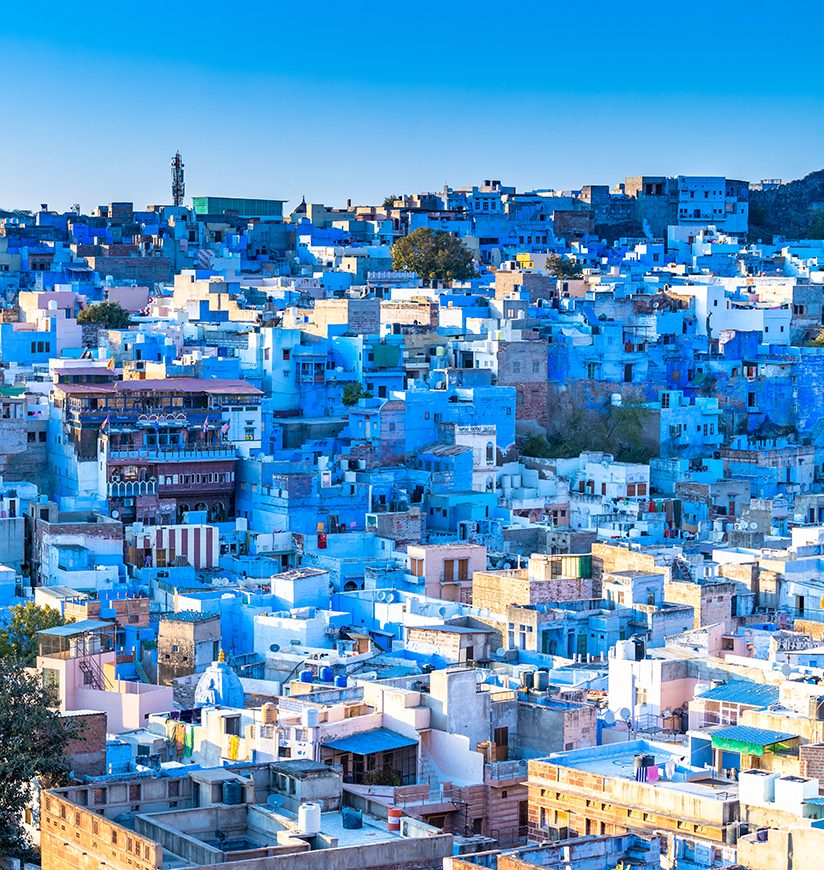
Jodhpur is situated at the edge of the Thar Desert. Jodhpur has a typical desert climate, dry and hot. The ideal time to visit Jodhpur is the period between November and March. Jodhpur is like an oasis in the vast desert, with a variety of thorny shrubs all over the area. Jodhpur also has some of the animal species that can survive in an arid and dry environment.
Jodhpur has extreme type of climate with temperature range variation being very high. Average rainfall is 32 cm annually. The best season to visit the city is between October and March.
One should plan the visit to Jodhpur during the best time to get rid of the uncomforting heat and dry spell of the summer season. One good quality moisturizer and some light woolens for the day and some extra woolen stuff for the winter nights is advisable.

Situated on a steep hill, Mehrangarh fort is one of the largest forts in India. The beauty and the grandeur of numerous palaces in the fort narrate a saga of hard sandstones yielding to the chisels of skilled Jodhpuri sculptures. The Mehrangarh Fort encloses many palaces, which are known for their intricate carvings and sprawling courtyards. Moti Mahal or the Pearl Palace has a delicately carved stone screen and treasures the Sringar Chowki, royal throne of Jodhpur. Umaid Villas displays the Rajput miniature paintings and Ajit Villas exhibits musical instruments and the royal costumes. A beautiful mirror room joins both these villas.
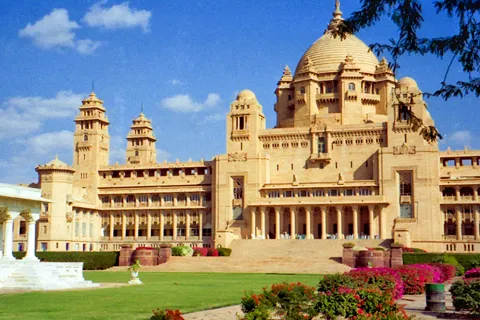
This is known as Umaid Bhawan Palace because of the particular type of sandstone used, to build it - which is not weathered. Portions of the Umaid palace have been converted into a hotel and a museum. The only palace built in 20th century under the famine relief programme, has now been converted into a hotel with some parts being retained as a museum.

The 19th century royal cenotaph is built in white marble, in commemoration of Maharaja Jaswant Singh. Some rare portraits of the rulers of Jodhpur are also displayed here.
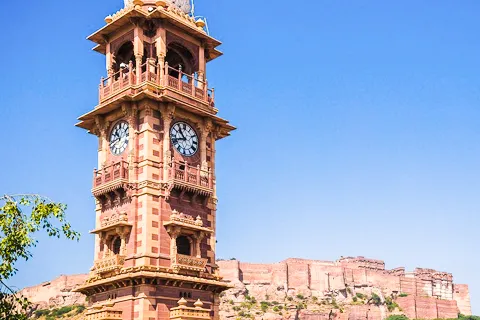
TIn the old city clock tower is a prominent landmark. But main attraction is the Sadar market. The market has kept alive the old haat bazaar culture.
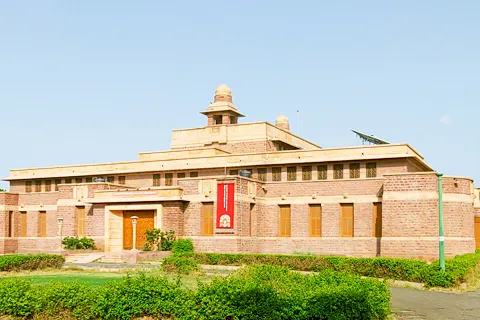
This museum has a rich collection of weapons, textiles, miniature portraits, local crafts and images of Jain Tirthankars. It is situated in the middle of the Umaid public gardens.
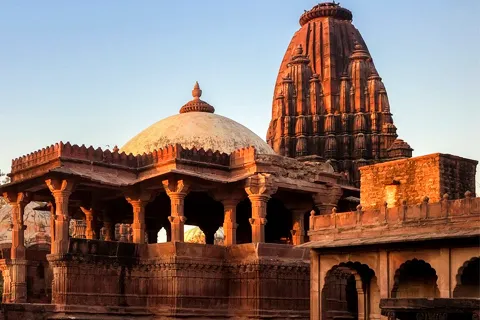
Towards the north of Jodhpur is the ancient capital of Marwar, Mandore. It is just 8 Kms from the city. Main attractions of the place are hall of Heroes where sixteen huge figures which have been carved out of a single rock, the shrine of 330 million Gods and the royal cenotaphs. But one cannot miss the caves in crags and the sprawling gardens, which are now shelter place for monkeys and peacocks. Greenery of the place makes Mandore, in true sense, an oasis.

65 Kms from Jodhpur, lies ruins of an ancient city called Ossian. This city is famous for Brahmanical and Jain temples, which belong to 8th and 11th century. Surya or Sun temple and the Sachiya temples are famous for their beauty. The shikhar of Sachiya temple is clustered by two rows of turrets, an ambulatory and a large assembly hall with an elaborate ceiling.

TThe villages are inhabited by the Bishnoi tribe who are staunch believers in the sanctity of plant and animal life. Villages are marked by Khejri trees and deers, which thrive there. 25 Kms from Jodhpur.

This picturesque artificial lake is 7 Kms from the main city. Summer palaces along the embankment and a bird sanctuary has made it a picnic spot.
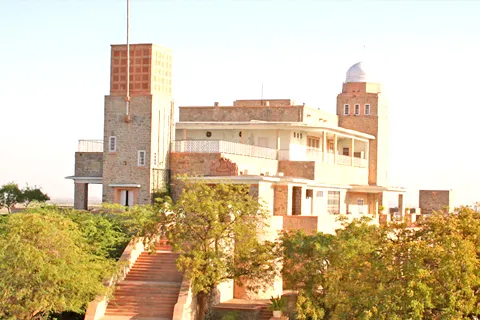
Rajasthani village life and vibrant cultural colors come alive as you drive along the 55 Kms stretch. The monotony of the drive is broken by Chinkaras and black bucks that frisk pass the road.
© All Rights Reserved Jodhpur Association Mumbai .| Design and Developed by JJS WEB WORLD.